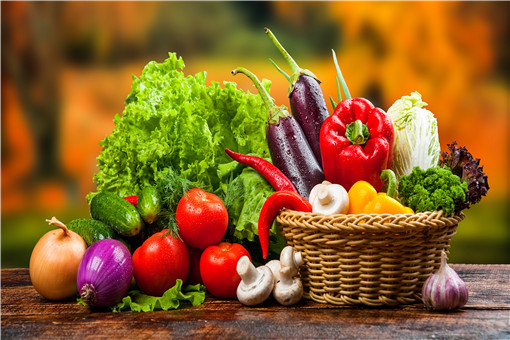The following is a more detailed description of the growing environment, characteristics, consumption methods and effects of the world’s recognized ten healthy foods (including two additional types) :
Step 1: Tomatoes
Growing environment: Tomatoes are native to South America and are now cultivated all over the world. It likes a warm, moist climate and has a wide adaptability to soil, but it is better to have well-drained, fertile soil.
Features: tomato color bright, sweet and sour taste juicy. It is rich in lycopene, vitamin C, vitamin A and other nutrients, with high nutritional value.
How to eat: Tomatoes can be eaten raw, fried, boiled soup and other ways to eat. Common dishes are scrambled eggs with tomato, stewed beef brisket with tomato and so on.
Efficacy: Lycopene has antioxidant, cholesterol reduction, prevention of cardiovascular and cerebrovascular diseases. At the same time, tomatoes can also promote digestion, eyesight, beauty and beauty.
- Spinach
Growing environment: Spinach likes cold climate, cold resistance, soil requirements are not strict, but fertile, water and fertilizer retention ability of the soil is better.
Features: Spinach leaves light green, taste fresh and tender. It is rich in iron, calcium, vitamin A, vitamin C and other nutrients.
How to eat: Spinach can be fried, boiled soup, cold mix and other ways to eat. Common dishes are scrambled eggs with spinach, stewed tofu with spinach and so on.
Efficacy: Spinach has a variety of effects such as blood tonic, brain health, constipation prevention, vision protection, beauty and beauty.
- Broccoli
Growing environment: Broccoli likes a cool climate and is suitable for growing in a place with sufficient light and good ventilation. It has high soil requirements, requiring fertile, loose, well-drained soil.
Features: Broccoli is bright green in color and crisp and tender in taste. It is rich in vitamin C, vitamin K, folic acid and other nutrients.
How to eat: Broccoli can be fried, boiled soup, cold mix and other ways to eat. Common dishes are stir-fried broccoli, broccoli stewed ribs and so on.
Efficacy: Broccoli has anti-cancer, enhance immunity, protect eyesight, promote digestion and other effects.

- Salmon
Salmon live mainly in cold Marine environments, such as the North Pacific and North Atlantic. They like to travel upstream to freshwater rivers to spawn.
Features: Salmon meat is tender and delicious. It is rich in unsaturated fatty acids, protein, vitamin D and other nutrients.
How to eat: Salmon can be fried, grilled, steamed and other ways to eat. Common dishes are fried salmon, grilled salmon and so on.
Efficacy: Salmon can reduce cholesterol, prevent cardiovascular and cerebrovascular diseases, protect eyesight, enhance memory and other effects.
Step 5: Garlic
Growing environment: Garlic has wide adaptability, likes cold and cool environment, and is more resistant to low temperature. The soil requirements are not strict, but the fertile loam rich in organic matter, loose and breathable, strong water retention and drainage performance is more suitable.
Features: Garlic has a unique spicy taste and aroma. It contains sulfides, allicin and other active ingredients, has high medicinal value.
How to eat: Garlic can be eaten raw, fried, stewed soup and other ways to eat. Common dishes include broccoli with garlic and chicken stew with garlic.
Efficacy: Garlic has antibacterial and anti-inflammatory, reduce blood pressure, prevent cardiovascular and cerebrovascular diseases, enhance immunity and other effects.
- Blueberries
Growing environment: Blueberries like acidic soil, cold-resistant, moisture-loving, but too much water is not conducive to root development, requiring loose soil, good ventilation, moist but not water.
Features: Blueberry fruit is blue or purple, taste sweet and sour. It is rich in antioxidants such as anthocyanins and vitamin C.
How to eat: Blueberries can be eaten directly, or can be used to make jams, juices, etc. Common ways to eat blueberry yogurt, blueberry salad and so on.
Efficacy: Blueberries have antioxidant, vision protection, prevention of cardiovascular and cerebrovascular diseases, anti-aging and other effects.
- Oats
Growing environment: Oat likes cool and humid climate, strong cold resistance, the soil requirements are not strict, but the fertile, loose, well-drained soil is best.
Features: Oatmeal taste slippery, rich in nutrition. It is rich in dietary fiber, protein, vitamins and minerals.
How to eat: Oats can be eaten in many ways such as porridge and pastry. Common dishes are oatmeal, oatmeal bread and so on.
Efficacy: Oats have a variety of effects such as lowering cholesterol, controlling blood sugar, promoting digestion, and losing weight.

- Green Tea
Growing environment: Green tea is mainly produced in the subtropical humid climate zone, which requires sufficient sunshine and a humid environment. It likes acidic soil and has higher requirements for soil drainage.
Features: Green tea color green, fresh aroma. It contains tea polyphenols, caffeine and other active ingredients.
How to eat: Green tea is usually brewed in hot water and drunk. Can also be used to make tea, tea drinks and so on.
Effect: Green tea has antioxidant, refreshing, lowering cholesterol, preventing cardiovascular and cerebrovascular diseases and other effects.
- Walnuts
Growing environment: Walnut trees like sunny places, cold resistance, drought resistance, disease resistance, adapt to a variety of soil growth, like fertile and moist sandy loam, like water, fertilizer, but the water and fertilizer requirements are not strict.
Features: The walnut fruit is oval, the shell is hard, and the kernel inside is crisp and delicious. It is rich in unsaturated fatty acids, protein, minerals and vitamins.
How to eat: Walnuts can be eaten directly, but also can be used to make cakes, candy and so on. Common eating ways are walnut cake, walnut dew and so on.
Efficacy: Walnuts have a variety of effects such as brain health, lowering cholesterol, preventing cardiovascular and cerebrovascular diseases, and anti-oxidation.
- Almonds
Growing environment: Almond trees like warm and humid climate, wide adaptability to soil, but good drainage, fertile soil is preferable.
Features: The almond fruit is flat, the shell is hard, and the inner kernel is sweet and tasty. It is rich in protein, fat, minerals and vitamins.
How to eat: Almonds can be eaten directly, or can be used to make pastries, drinks, etc. Common ways to eat almond cake, apricot tea and so on.
Efficacy: Almonds have a variety of effects such as moistening the lungs and relieving cough, lowering cholesterol, preventing cardiovascular and cerebrovascular diseases, and beautifying the face.
- Avocado (avocado)
Growing environment: Avocado native to tropical America, like warm and humid climate, not cold, only a few varieties can tolerate short-term low temperature 0 degrees, suitable for the annual average temperature of 20~25 degrees, drought resistance is very strong, but not waterlogging tolerance.
Characteristics: The avocado fruit is pear-shaped, with rough skin and yellowish-green internal flesh. The taste is delicate and creamy. It is rich in unsaturated fatty acids, dietary fiber, vitamins and minerals.
How to eat: Avocados can be eaten raw, made into salads, made into juices, or added to other foods. Common ways to eat it are avocado salad, avocado milkshake, etc.
Benefits: Avocados help lower cholesterol, improve cardiovascular health, and provide a wealth of dietary fiber to improve digestion. At the same time, its rich vitamins and minerals also play an important role in maintaining the normal function of the body.
- Sweet potatoes
Growing environment: Sweet potato adaptability, soil requirements are not strict, but fertile, loose, well-drained sandy soil or loam is most suitable. It prefers warm, humid climates, but is intolerant of cold.
Features: Sweet potato root oval or spindle shape, smooth skin or small pits, internal flesh orange red or yellow, sweet taste. It is rich in nutrients such as dietary fiber, vitamin A, vitamin C, and potassium.
How to eat: Sweet potatoes can be boiled, roasted, steamed and other ways to eat. Common dishes are baked sweet potato, sweet potato porridge and so on.
Benefits: Sweet potatoes help maintain stable blood pressure, prevent constipation, protect vision, and provide a rich source of energy. At the same time, its low calories and high nutritional value make it an ideal food for weight loss and maintaining a healthy weight.
These healthy foods have their own characteristics, not only delicious, but also nutritious, and play an important role in maintaining human health. However, each person’s nutritional needs and physique are different, so these foods should be consumed in moderation according to individual circumstances and a balanced diet should be maintained. At the same time, if you have any health concerns or concerns, it is recommended to consult a professional doctor or dietitian for advice.

